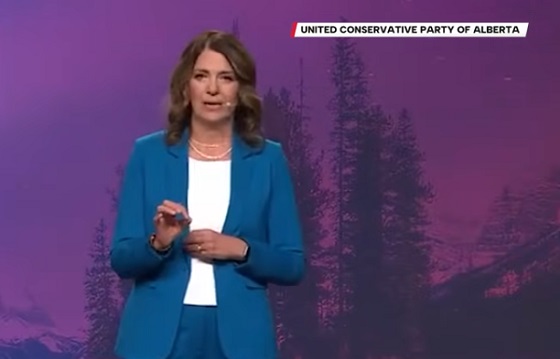Business
Trudeau’s labor minister pushes ‘equity’ mandate to favor LGBT job applicants

From LifeSiteNews
The report presented by Liberal Labour Minister Seamus O’Regan suggests giving special privileges to ‘LGBT-identifying and Black Canadians’ in the hiring process in the name of ‘equity,’ and dismisses concerns that such a move is tantamount to discrimination.
The Trudeau government is celebrating a newly proposed equity mandate which would reward LGBT-identifying job applicants over those with natural sexual proclivities.
On December 11, Liberal Labour Minister Seamus O’Regan announced the Employment Equity Act Review Task Force report, which seeks to add “LGBT-identifying and Black Canadians” to the list of those with special hiring privileges.
“It’s pretty historical,” O’Regan said outside the House of Commons foyer on Monday. “We are naming Black people and 2SLGBTQI+ individuals as designated groups under the Employment Equity Act.”
According to information obtained by the Canadian Broadcasting Corporation (CBC), the Liberal government, under the leadership of Prime Minister Justin Trudeau, “broadly supports” the recommendation.
The report, led by McGill University law professor Adelle Blackett, assured Canadians that it would not lead to “reverse discrimination” or abolish a merit-based hiring system, despite seemingly being formulated to do exactly that.
“Let us be clear: the Employment Equity Act framework does not impose quotas, and the notion of ‘reverse discrimination’ is not part of Canadian equality law and is likewise not part of the Canadian Employment Equity Act framework,” reads the introduction.
While the job candidates would still have to meet certain requirements to be considered for the position, they would not be competing against all candidates for the position but just those within their so-called minority group. As a result, they would have a higher chance of being hired for the position compared to someone who did not fit into the group.
The report dismissed this concern, however, labeling it as an American, not Canadian, argument. “The U.S. idea of ‘reverse discrimination’ has in particular gained a lot of attention. It is used so often in common parlance that many people do not recognize that it is not a part of Canadian substantive equality law,” reads the report.
The report also attempted to address the problem that because being an LGBT-identifying person is not an objective category, it is conceivable that people could just say they are members of the LGBT so-called community as a way to gain an advantage in the hiring process.
“Declarations of this nature… would constitute dishonesty in the employment relationship and although the threshold for dismissal on that basis is high, contextual factors to assessing the appropriate sanction would rationally include any preferential treatment received on the basis of the false statement,” the report said.
In recent years, there has been a push for in Canada, the United States and much of the West to go along with so-called “diversity, equity, & inclusion” (DEI) hiring and promotion practices.
The controversy surrounding DEI is that it usually goes hand-in-hand with a slew of identity-based social causes and grievances that undermine merit-based hiring, meaning that the most qualified person for a job may be overlooked in favor of someone of a particular skin color, ethnicity or sexual proclivity.
In 2019, the Canadian military was exposed for periodically closing all applications to the armed forces except to women if their so-called employment equity targets had not been met.
Similarly, in June 2023, Ontario announced free training for truck drivers; however, the offer was only extended to “women, newcomers and others from underrepresented groups,” effectively barring anyone except white, heterosexual men.
Additionally, this October, British Columbia construction companies were offered an extra cash incentive if they hire first-year apprentices who “self-identify” as LGBT, disabled, or anything other than a white heterosexual male.
Business
US Energy Secretary says price of energy determined by politicians and policies


From the Daily Caller News Foundation
During the latest marathon cabinet meeting on Dec. 2, Energy Secretary Chris Wright made news when he told President Donald Trump that “The biggest determinant of the price of energy is politicians, political leaders, and polices — that’s what drives energy prices.”
He’s right about that, and it is why the back-and-forth struggle over federal energy and climate policy plays such a key role in America’s economy and society. Just 10 months into this second Trump presidency, the administration’s policies are already having a profound impact, both at home and abroad.
While the rapid expansion of AI datacenters over the past year is currently being blamed by many for driving up electric costs, power bills were skyrocketing long before that big tech boom began, driven in large part by the policies of the Obama and Biden administration designed to regulate and subsidize an energy transition into reality. As I’ve pointed out here in the past, driving up the costs of all forms of energy to encourage conservation is a central objective of the climate alarm-driven transition, and that part of the green agenda has been highly effective.
Dear Readers:
As a nonprofit, we are dependent on the generosity of our readers.
Please consider making a small donation of any amount here.
Thank you!
President Trump, Wright, and other key appointees like Interior Secretary Doug Burgum and EPA Administrator Lee Zeldin have moved aggressively throughout 2025 to repeal much of that onerous regulatory agenda. The GOP congressional majorities succeeded in phasing out Biden’s costly green energy subsidies as part of the One Big Beautiful Bill Act, which Trump signed into law on July 4. As the federal regulatory structure eases and subsidy costs diminish, it is reasonable to expect a gradual easing of electricity and other energy prices.
This year’s fading out of public fear over climate change and its attendant fright narrative spells bad news for the climate alarm movement. The resulting cracks in the green facade have manifested rapidly in recent weeks.
Climate-focused conflict groups that rely on public fears to drive donations have fallen on hard times. According to a report in the New York Times, the Sierra Club has lost 60 percent of the membership it reported in 2019 and the group’s management team has fallen into infighting over elements of the group’s agenda. Greenpeace is struggling just to stay afloat after losing a huge court judgment for defaming pipeline company Energy Transfer during its efforts to stop the building of the Dakota Access Pipeline.
350.org, an advocacy group founded by Bill McKibben, shut down its U.S. operations in November amid funding woes that had forced planned 25 percent budget cuts for 2025 and 2026. Employees at EDF voted to form their own union after the group went through several rounds of budget cuts and layoffs in recent months.
The fading of climate fears in turn caused the ESG management and investing fad to also fall out of favor, leading to a flood of companies backtracking on green investments and climate commitments. The Net Zero Banking Alliance disbanded after most of America’s big banks – Goldman Sachs, J.P. Morgan Chase, Citigroup, Wells Fargo and others – chose to drop out of its membership.
The EV industry is also struggling. As the Trump White House moves to repeal Biden-era auto mileage requirements, Ford Motor Company is preparing to shut down production of its vaunted F-150 Lightning electric pickup, and Stellantis cancelled plans to roll out a full-size EV truck of its own. Overall EV sales in the U.S. collapsed in October and November following the repeal of the $7,500 per car IRA subsidy effective Sept 30.
The administration’s policy actions have already ended any new leasing for costly and unneeded offshore wind projects in federal waters and have forced the suspension or abandonment of several projects that were already moving ahead. Capital has continued to flow into the solar industry, but even that industry’s ability to expand seems likely to fade once the federal subsidies are fully repealed at the end of 2027.
Truly, public policy matters where energy is concerned. It drives corporate strategies, capital investments, resource development and movement, and ultimately influences the cost of energy in all its forms and products. The speed at which Trump and his key appointees have driven this principle home since Jan. 20 has been truly stunning.
David Blackmon is an energy writer and consultant based in Texas. He spent 40 years in the oil and gas business, where he specialized in public policy and communications.
Business
Oil tanker traffic surges but spills stay at zero after Trans Mountain Expansion

From the Canadian Energy Centre
Bigger project maintains decades-long marine safety record
The Trans Mountain system continues its decades-long record of zero marine spills, even as oil tanker traffic has surged more than 800 per cent since the pipeline’s expansion in May 2024.
The number of tankers calling at Trans Mountain’s Westridge Marine Terminal in the Port of Vancouver in one month now rivals the number that used to go through in one year.
A global trend toward safer tanker operations
Trans Mountain’s safe operations are part of a worldwide trend. Global oil tanker traffic is up, yet spills are down, according to the International Tanker Owners Pollution Federation, a London, UK-based nonprofit that provides data and response support.
Transport Canada reports a 95 per cent drop in ship-source oil spills and spill volumes since the 1970s, driven by stronger ship design, improved response and better regulations.
“Tankers are now designed much more safely. They are double-hulled and compartmentalized to mitigate spills,” said Mike Lowry, spokesperson for the Western Canada Marine Response Corporation (WCMRC).
WCMRC: Ready to protect the West Coast

One of WCMRC’s new response vessels arrives in Barkley Sound. Photo courtesy Western Canada Marine Response Corporation
From eight marine bases including Vancouver and Prince Rupert, WCMRC stands at the ready to protect all 27,000 kilometres of Canada’s western coastline.
Lowry sees the corporation as similar to firefighters — training to respond to an event they hope they never have to see.
In September, it conducted a large-scale training exercise for a worst-case spill scenario. This included the KJ Gardner — Canada’s largest spill response vessel and a part of WCMRC’s fleet since 2024.
“It’s part of the work we do to make sure everybody is trained and prepared to use our assets just in case,” Lowry said.
Expanding capacity for Trans Mountain

The K.J. Gardner is the largest-ever spill response vessel in Canada. Photo courtesy Western Canada Marine Response Corporation
WCMRC’s fleet and capabilities were doubled with a $170-million expansion to support the Trans Mountain project.
Between 2012 and 2024, the company grew from 13 people and $12 million in assets to more than 200 people and $213 million in assets.
“About 80 per cent of our employees are mariners who work as deckhands, captains and marine engineers on our vessels,” Lowry said.
“Most of the incidents we respond to are small marine diesel spills — the last one was a fuel leak from a forest logging vessel near Nanaimo — so we have deployed our fleet in other ways.”
Tanker safety starts with strong rules and local expertise

Tanker loading at the Westridge Marine Terminal in the Port of Vancouver. Photo courtesy Trans Mountain Corporation
Speaking on the ARC Energy Ideas podcast, Trans Mountain CEO Mark Maki said tanker safety starts with strong regulations, including the use of local pilots to guide vessels into the harbour.
“On the Mississippi River, you have Mississippi River pilots because they know how the river behaves. Same thing would apply here in Vancouver Harbour. Tides are strong, so people who are familiar with the harbor and have years and decades of experience are making sure the ships go in and out safely,” Maki said.
“A high standard is applied to any ship that calls, and our facility has to meet very strict requirements. And we have rejected ships, just said, ‘Nope, that one doesn’t fit the bill.’ A ship calling on our facilities is very, very carefully looked at.”
Working with communities to protect sensitive areas
Beyond escorting ships and preparing for spills, WCMRC partners with coastal communities to map sensitive areas that need rapid protection including salmon streams, clam beds and culturally important sites like burial grounds.
“We want to empower communities and nations to be more prepared and involved,” Lowry said.
“They can help us identify and protect the areas that they value or view as sensitive by working with our mapping people to identify those areas in advance. If we know where those are ahead of time, we can develop a protection strategy for them.”
-

 International20 hours ago
International20 hours agoFBI may have finally nabbed the Jan. 6 pipe bomber
-

 Energy2 days ago
Energy2 days agoCanada following Europe’s stumble by ignoring energy reality
-

 Energy6 hours ago
Energy6 hours agoA look inside the ‘floatel’ housing B.C.’s LNG workforce
-

 COVID-1914 hours ago
COVID-1914 hours agoUniversity of Colorado will pay $10 million to staff, students for trying to force them to take COVID shots
-

 Business1 day ago
Business1 day agoCanada’s climate agenda hit business hard but barely cut emissions
-

 espionage20 hours ago
espionage20 hours agoDigital messages reportedly allege Chinese police targeted dissident who died suspiciously near Vancouver
-

 MAiD2 days ago
MAiD2 days agoFrom Exception to Routine. Why Canada’s State-Assisted Suicide Regime Demands a Human-Rights Review
-

 Business2 days ago
Business2 days agoCarney government should privatize airports—then open airline industry to competition






